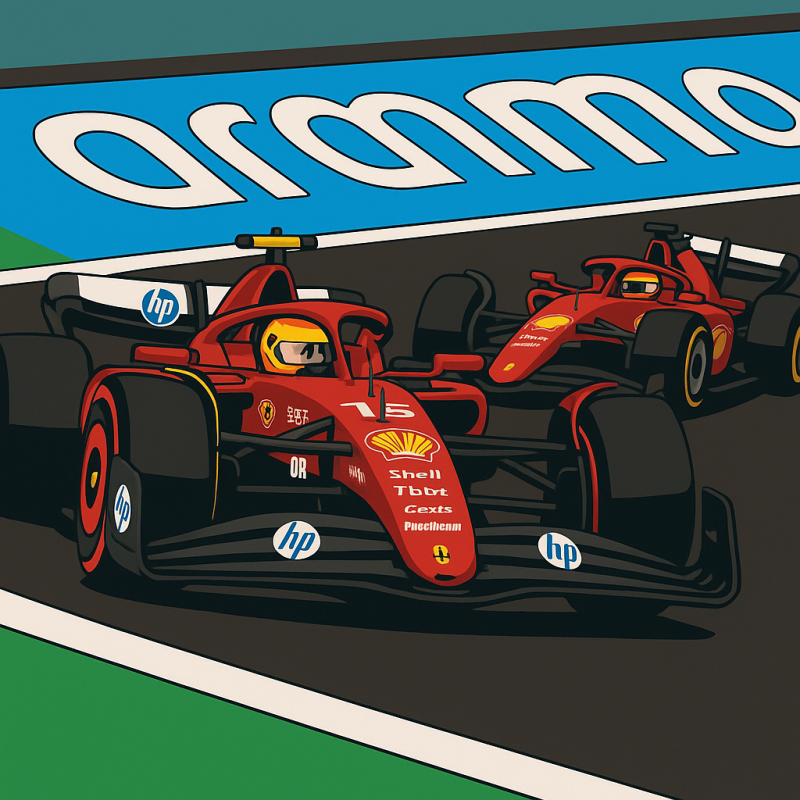Hamilton steadies the ship at Zandvoort: Q3 return, but Ferrari still miles off the mark
If Hungary felt like the nadir of Lewis Hamilton’s first year in red, Zandvoort looked like a reset. The Ferrari driver will start the Dutch Grand Prix from seventh, one spot behind Charles Leclerc, after a calmer, cleaner build-up capped by a straightforward run into Q3. Progress, finally—just not enough of it.
The contrast with Budapest is stark. A Q2 exit there, a 12th-place finish on Sunday, and enough noise around his form to stir awkward questions about whether he’d even fancy returning after the summer break. All of that cooled on the North Sea coast. The mood, notably, was lighter.
“I tried a slightly different approach coming into the weekend,” Hamilton said, without giving up the details. “Made some tweaks before I arrived and through the sessions, and it’s been a lot smoother. I’ve not been in Q3 for some time, so I’m grateful for that. The guys deserve it.”
Ferrari’s weekend hasn’t been trouble-free—the SF-25 still has that unpredictable streak, and a gusty Zandvoort did it no favors. Hamilton pointed to small, deliberate setup changes through practice, a stable engineering direction, and the confidence that comes with it. “You saw my first lap yesterday—it was quick,” he noted, grinning about the one that followed: a spin. Even so, the base was better, the execution tidier.
The bigger problem sits in the timing sheets. Oscar Piastri took pole, leaving the Ferraris a long way back on a short lap. Leclerc’s best was 0.678s down; Hamilton’s deficit 0.728s. On a circuit that punishes hesitation and rewards commitment, that’s a canyon.
“We’re not where we want to be,” Hamilton admitted. “To be seven-tenths off around here is huge. We need to understand it, because Charles was on pole at the last race. Naturally, we still have that deficit. We’ve had it all year long.”
That’s the sting. Ferrari arrived with quiet optimism after Leclerc’s Hungary pole, only to slip out of the fight at Zandvoort while McLaren and company turned the screw. The red cars looked happier over a single lap than in long runs earlier in the weekend, but the ceiling remains stubborn.
Inside the garage there’s at least a sense of control that was missing before the break. Hamilton’s side has been hunting a baseline for weeks; here, they found something they could nudge rather than overhaul. “It’s been one of the most solid couple of days of the year,” he said. “Improvements in the process, my approach—just a bit calmer overall. The team did a great job through qualifying. We just need more performance. Maybe the race pace will be a bit better. Hopefully we can apply some pressure and move forwards.”
That last part is the target now. Zandvoort’s narrow lines and high-deg bite make it a strategy race as much as a bravery test. If Ferrari’s tire management holds, Hamilton can lean on race craft to climb into the top five, especially if the pack ahead gets cute with undercuts and traffic. The caveat is obvious: track position is king here, and seven-tenths in quali usually translates to mirrors full of orange on Sunday.
For Ferrari, the take-away is split. The process is improving. The deficit isn’t. And while Hamilton’s reset weekend will quiet the chatter that trailed him out of Budapest, it also underlines the scale of work left if he and Leclerc are to turn this into anything resembling a title run in 2025.
The sneaky good news? Hamilton sounds engaged. He sounds like a driver who’s found a foothold—finally—inside a car that hasn’t wanted to meet him halfway. That won’t lift the SF-25 into parc fermé fireworks by itself, but it’s the first non-negotiable step toward doing so.
Sunday’s job description is simple: hold ground off the line, keep the strategy clean, and be ready when the race tightens. If Ferrari can’t outrun the deficit, they’ll have to out-execute it. And after what we saw in Hungary, that alone would mark real progress.




